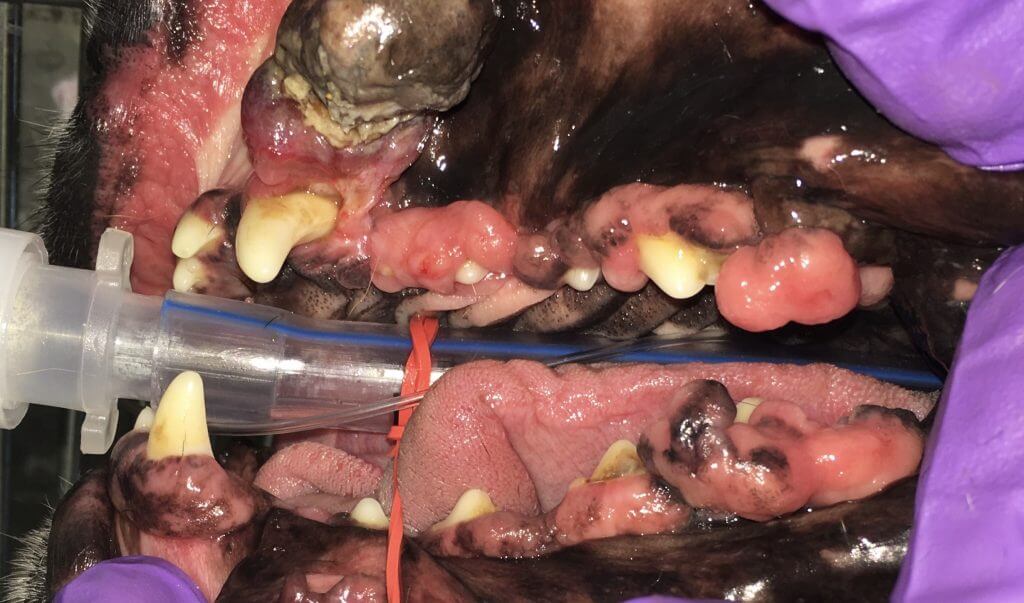As described in a recent post, dental conditions are often hidden and painful. The following posts are going to help describe conditions that pets can get as well as treatment. Many people I talk with are surprised how we can help pets with dental conditions and save teeth whenever possible.

While the above images look drastic, this particular patient was much-improved 1 year later:

With the mild regrowth, retreatment is still needed, but there has not been destruction to the point of tooth loss. Left untreated the excess tissue traps food and hair between the tissue and the teeth resulting in loss of supporting structures and eventually teeth.
The above images and statements have been referring to gingival hyperplasia. Technically it cannot be said what this tissue is without biopsy results. We can say for certain is that there is gingival enlargement (GE). Whether the gingival enlargement is due to hyperplasia or hypertrophy, or whether the enlargement involves extensive thickening of the tissue, the goal is the same: return the structure and function of the area to a healthy sulcus (the space between the gum and the tooth).
Here are some additional examples of gingival enlargement before and after treatment.
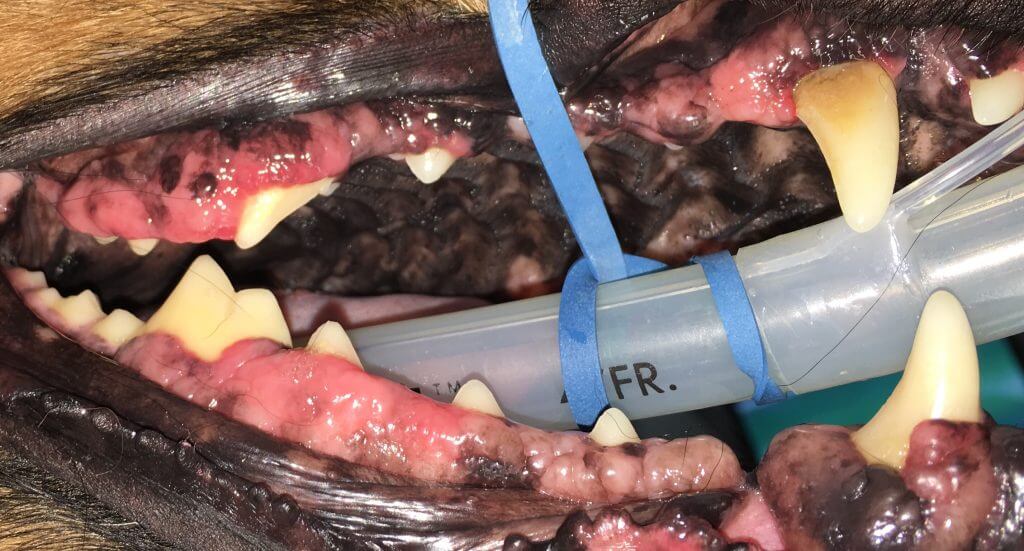
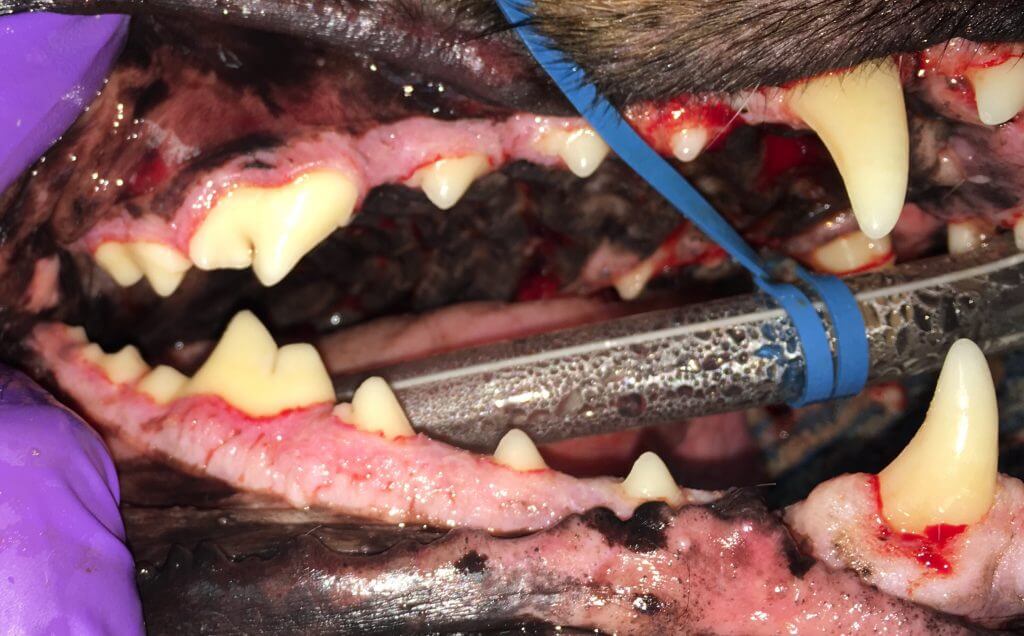
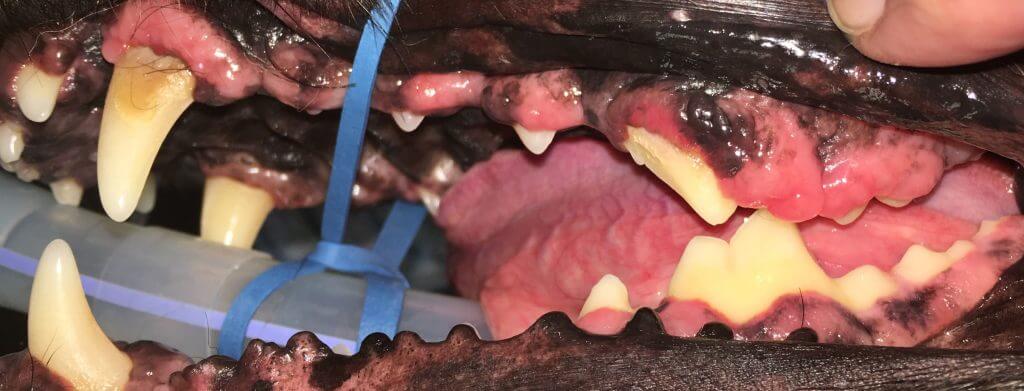
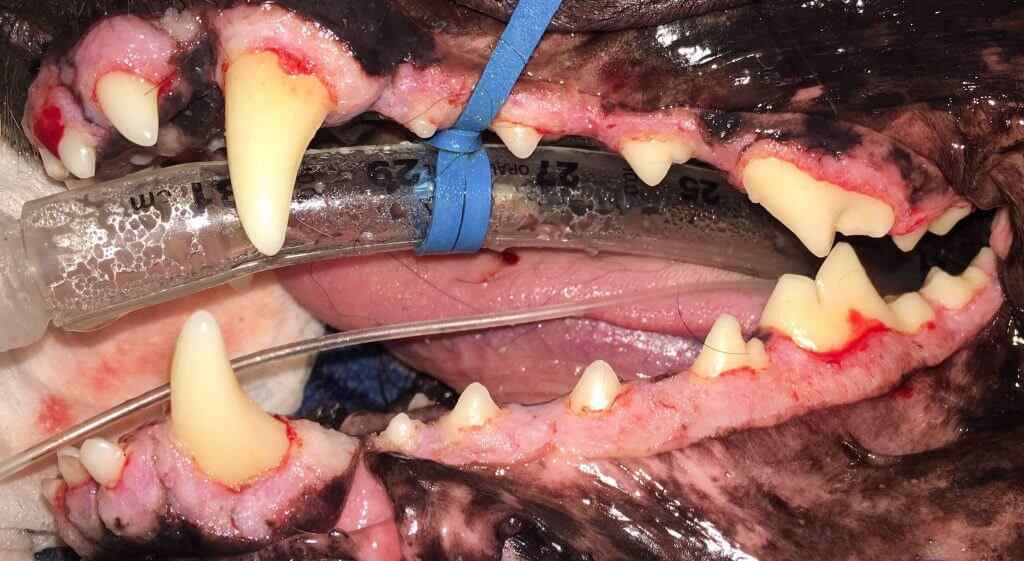
Though sometimes quite focal, often these lesions are generalized, particularly in breeds that show a familial tendency, such as Boxers, Bulldogs, and Collies.
Gingival enlargement can also be caused by hormonal changes or different drug administration (e.g., cyclosporine, amlodipine) in some patients.
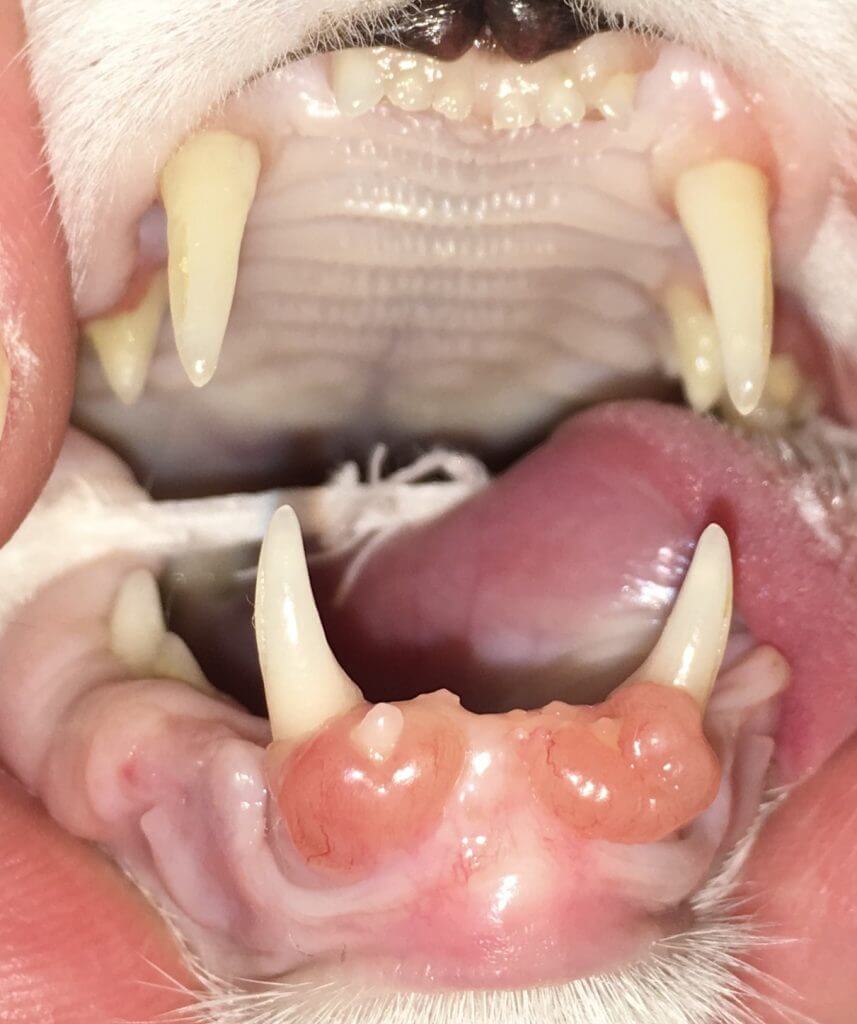
Some gingival enlargements may actually be growths or tumors and seem like other non-concerning changes seen in other patient. This is why all types of GE should be biopsied. Biopsy samples should be sent to an ORAL pathologist. Dr. Cindy Bell (KSU) currently is the leader oral pathology. Speaking from experience, it appears her reads tend to be more definitive than others. She is down to earth and will actually talk to veterinarians about treatment or help provide connections to speak to a veterinary dentist about the case.
Check out the oral tumor section to learn more.
